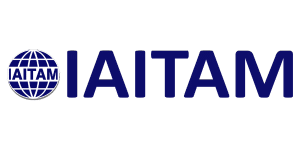ITAM: Cost Center or Cost Efficiency Champions?

How is your ITAM program viewed? How are your IT Asset Managers perceived across the organization? Do most of your employees see the reasons behind ITAM’s policies, procedures, and IT standards and recognize the value of those who work to ensure that those elements continue to be supportive? Or do you have a less favorable answer for those questions of perceived value?
It’s easy to see why some may view the ITAM Team as the team that the organizations pays to deny requests or even just merely as the team that gets paid to ensure that everyone is running the same version of the same software, etc. and fail to see why those elements of ITAM are important. The fact of the matter is that yes, it does cost money to maintain and support IT assets, allocate IT resources in a controlled fashion, help to mitigate risks, and derive long-term value from the acquisition and use of the organization’s IT assets. But that doesn’t mean that IT Asset Managers are not also facilitating better and more strategic financial management that benefits every member of the organization at the same time, by those same “costly” functions.
ITAM impacts cost efficiency across all departments!
Through Best Practices, metrics, tools, and projects utilized across the 12 KPAs, IT Asset Managers optimize the use and cost of technology across the organization. ITAM ensures that each employee has the best set of assets for their job functions, that those assets are being used and maintained properly throughout their lifecycle, and they are dispositioned in a cost-effective manner once they no longer provide an acceptable value to the organization. ITAM assists in more accurate forecasting and allocation of budgets by providing insights into the lifecycle of each IT asset.
Everything leads back to the budget in the end!
ITAM is a cross-functional area that considers the financial, legal, contractual, security, and functionality requirement related to IT assets and their use across the organization. While ITAM focuses on many areas of the management of IT assets that are not directly related to the budget, even those areas can have direct or indirect impacts on financial planning and strategy too. For instance, let’s look at how the ITAM Program impacts Compliance, Legislation, and Risk Management.
If your organization does not use it’s software in accordance with the terms and conditions of the license or breaks a law regarding data/records handling/retention, there will be fines and penalties along with possible loss of productivity, damage to your organization’s relationship with the vendor, and maybe even damage to your organization’s reputation. If the right asset usage data isn’t available to Security, the organization may face data breaches and other vulnerabilities that could cause a great deal of unbudgeted IT spending.
The work ITAM does in the Acquisition and Vendor Management KPAs can lower the total cost of ownership and facilitate lifecycle management efficiencies that increase the return on investment for each asset. For example, by researching into the organization’s needs and comparing to the capabilities and vendor’s standard requirements for use of an asset, we can ensure that we negotiate the most favorable terms for compliance, support, upgrades/downgrades, and of course, the price. Furthermore, we consistently monitor the performance of the asset as well as the vendor’s support and relationship to ensure we are getting the best possible value.
All of this research, planning, negotiating, maintenance, documentation, etc. across the 12 KPAs of the ITAM program provides valuable data analytics that empower organizational leadership to make strategic decisions about technology that will lead to cost efficiency and financial stability through more accurate forecasting. In these ways, IT Asset Managers have a profound impact on the organization’s bottom line. So Cost Center or Cost Efficiency Champions? It really depends on if you’re doing the right work and to the best of your ability. It’s up to your ITAM Team to decide.
